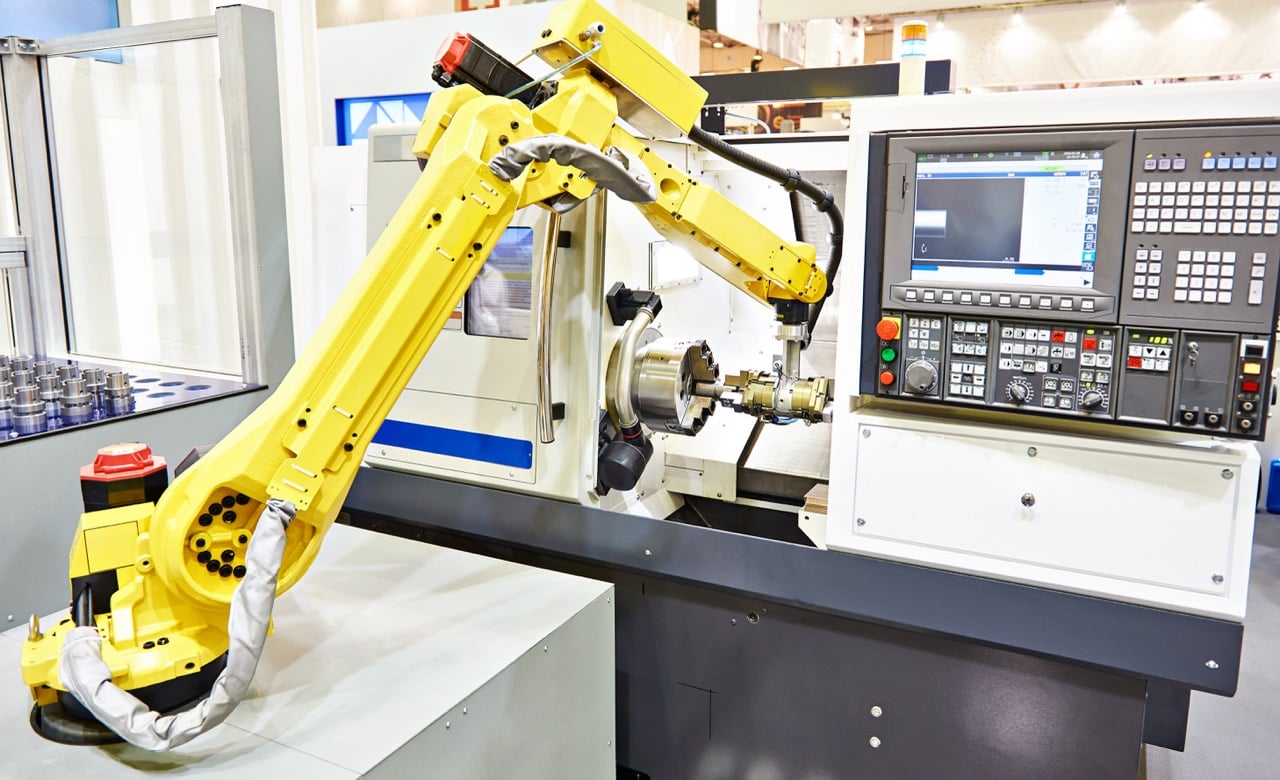Industrial automation - increasingly important for the metalworking industry

Over time, we have seen how orders and jobs in the metalworking industry have been coming back to Sweden. Customers appreciate swift deliveries and efficient collaborations with subcontractors.
This place higher demands on the metalworking industry to continue to deliver to their customers, and often means increased industrial automation to maintain both profitability and productivity. In this article we discuss different ways forward to automate industrial processing.
Tough demands for the future
The metalworking industry has always faced tough demands, and these are not diminishing:
- Fierce international competition means that it's difficult to raise prices, despite increased costs for equipment, energy and input materials. This creates a need for efficient production without waste.
- More complex details and demanding materials increase demand for more advanced machines, tools and skilled operators.
- Requirements for short lead times and smaller order sizes creates higher demand for rapid changeovers and flexibility.
- Increasingly strict quality requirements place demands on stable manufacturing processes with predictable outcomes.
- Increasing sustainability requirements are putting focus on full utilization of machines and inputs, as well as creating a better work environment.
- Increasingly difficult to find skilled personnel, and with expensive shift work more focus is put on the status of the profession and increased automation.
Industrial automation is the way forward
The challenges facing the metalworking industry point to a need for a higher degree of automation. There are several different paths forward, depending on the conditions companies have and what they want to achieve.
- Transfer machines and automatic turning
Transfer machines can produce large volumes but are also a complex and unique type of machine that is primarily suitable for really long series without the need for frequent and extensive changeovers. Automatic turning with bar material is a classic and effective way of automating that suits a certain type of component and size. As long as there is bar material in the magazine and tools, the machine can handle itself. - Advanced CNC machines
Today, we see CNC processing machines with more axes and technical solutions that provide opportunities to complete the part in one and the same machine. It is incredibly efficient but also involves a substantial investment, which increases the requirement for maximum machine utilization. - FMS group for automatic tool and material handling
Pallets and tools in an FMS system are an effective way of machine operation that suits larger and more complex products, but it takes time to prepare and load material onto the pallets. - Robot or Cobot
For a more flexible solution and to eliminate heavy, repetitive and dirty handling, robots are often used. Robots are often integrated with intelligent vision systems to be able to pick in and out parts, turn parts or perform other types of processing. For smaller parts, easier installation and lower cost, the number of installed collaborative robots, Cobots, is growing rapidly. - Driverless transport vehicles, AGV
In larger volume production, the transport of materials and articles between warehouses and processing machines can be advantageously automated, for example with driverless transport vehicles, AGV, (Autonomous Guided Vehicles). - Intelligent control and inspection
Some processed products require several accurate and advanced measurements with subsequent calibrations of machines and tools. Some of these can be integrated with CNC machines. Vision systems can be used to inspect a product. - Automated process fluid management
Increased automation of machine tools means an increased number of productive spindle hours, which in turn creates a demand for optimal machining conditions at all hours of the day. This means that the metalworking fluid must maintain a correct and stable concentration, tank level and quality.
FluidWorker is our product family for efficient process fluid handling. With FluidWorker you can automate the management of cutting fluid, grinding fluid, hardening fluid and washing fluid, and minimize manual work. The operators get more time to spend on other tasks, it lowers costs, increases productivity and reduces the climate footprint while at the same time creating a better work environment. Get in touch with us if you want to know more about our products and solutions.
Increased automation creates attractive jobs for operators
When automating processing machines, the operator will have more time to program and plan the next job, replenish with fresh tools, make important control measurements and follow up on information and statistics. If you can also ensure that raw materials and finished products can be supplied and transported away automatically, there is a possibility that the operator may be able to work day-time only, which creates better work conditions as well as reducing costs due to less shift work.
However, automation means that the demands on the operator also increases as more advanced knowledge of machines, automation, robotics, etc. is needed. The operator then gets a chance to be further trained and try out new tasks. It can be a motivating development that makes staff stay and actively contribute to the company's development, and also strongly motivate others to want to work at this company.
Read more about how our clients are using automated process fluid management:

Comment